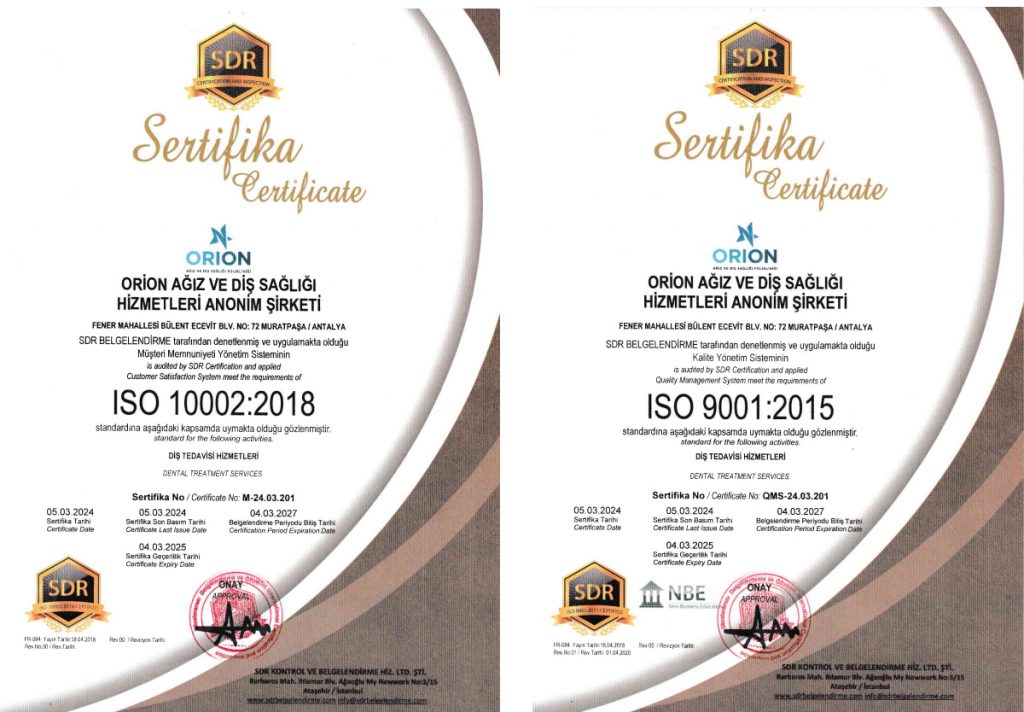- Fener Mah. Bulent Ecevit Blv. No:72 Muratpasa/ANTALYA
Untreated bruises are the most common way the pulp is infected, that is, damaged by inflammation. There are some bacteria in every person’s mouth and these normally do not cause any harm. However, some metabolize (ie break down) foods or drinks containing carbohydrates (sugar) to extract acid. These acids also damage enamel and dentin. When the bruises formed in this way are left untreated, the bacteria progress to the pulp (nerve) tissue under the dentine, causing it to be exposed and inflamed. Pulp can also be infected as a result of a trauma to the tooth. As a result of a severe blow to the tooth, the blood circulation transmitted to the tooth through the jawbone may be interrupted, and thus the pulp tissue loses its vitality over time.
Another way the pulp can be infected is the presence of long-term periodontal (gum and surrounding) disease around the tooth. Bacteria reach the pulp of the tooth through the tiny side canals opening to the root surface through the inflamed gingiva and cause inflammation, which we call ‘retrograde infection’.
Whatever the way the tooth is infected, if it is not treated, it may cause a painful abscess in the jawbone area surrounding the tooth over time.
If there is long-term sensitivity to cold and hot foods and drinks, and if pain is felt with biting, an infection may be mentioned.
At the same time, a serious change in the color of the tooth without any pain or swelling in the surrounding gum tissues is a sign of dental infection.
In some cases, the findings obtained as a result of dental and radiographic examinations without any such symptoms may reveal that the tooth should undergo root-canal treatment.
Under normal conditions, antibiotics are not required during root canal treatment.
In the presence of a widespread swelling, your physician may prescribe antibiotics to strengthen the body’s defense system and fight infection.

Copyright © 2022 Orion. Tüm Hakları Saklıdır.